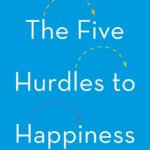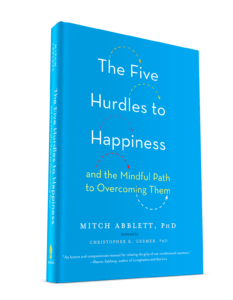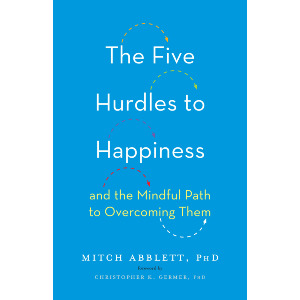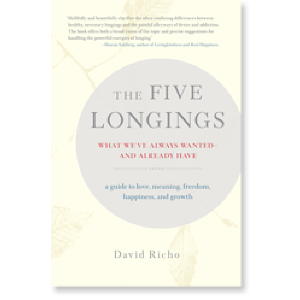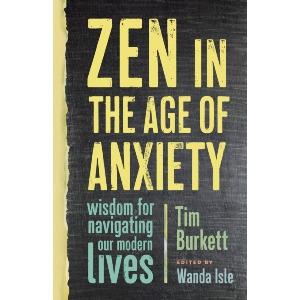OPENING INQUIRY
Are you willing to step onto the path of meditation and its hindrance-laden twists and turns and do so with the right intentions and with the necessary knowledge to guide your steps?
Act now! Limited time offer! Can your health and well-being afford for you to flip that channel?
“Of course I can’t!” my mind screamed. “I need this. I deserve this.” I only required the slightest nudge in the direction of the “Buy with One Click” button. It’s impossible to tickle yourself, so why can’t we be equally unable to push our own impulsive buttons?
I was carried away by the impulse at the close of the holiday season several years ago and ordered a collection of “power yoga” DVDs for use in home practice. It was P90X meets yoga, wherein you were challenged with a daily regimen of intense hour-long practices performed on the video by studio sets filled with svelte, unfairly flexible twenty-something yoga instructors. It was daily, it had a progress-tracking chart, and by God, I, in my early midlife-crisis drive to get lean and prove something of my power, was going to bang this out.
I made it a month or so into the program, but only by sheer, wrenching force. It hurt, and I had no idea what I was doing and how I was the source of a lot of the pain. There were some guided pranayama breathing and meditation sections, but these seemed on another planet from the sessions in which I was straining, agitated, falling over, and literally aching as something unnaturally popped in my anatomy. I ended up with a ferocious case of tendonitis in both elbows, with an inflamed irritability to match my tendon discomfort. I underwent surgery and began a slow, painful process of physical therapy to rebuild a modicum of strength in my arms.
I missed a crucial lesson on my first blitzkrieg pass at yoga. I somehow missed the DVD teaching that the essence of good practice of yoga is an abiding presence at the seamless juncture of mind and body. In the healthy practice of yoga postures (asanas), you don’t shove your body into pretzeldom just to prove you can or to wring your midlife angst out of your joints. Instead you patiently rest in the middle of physical tension at the edges of your capacity. You rest there without forcing or straining, patiently and mindfully breathing into the mild aversion—the discomfort—waiting for the body to respond, to open, and for the tension to leave of its own accord. You’d think I would have learned this already from my experience as a meditator. Alas, I was approaching yoga as a means to a fantasized end. I’ve done the same with my meditation practice over the years:
An aching half (or maybe only quarter) lotus sitting position . . . guided practices on CDs . . . eyes closed . . . Zen, zazen, breath counting . . . expectations of sudden enlightenment or perhaps a mystical experience or two . . . vipassana anchoring on the breath and noting of distraction/thought (because all the “going back to one” with zazen was just too boring) . . . eyes open . . . guided practices on CD in my car (ergo eyes open) . . . kneeling on a bench (I “caved” in service of comfort) . . . metta/loving-kindness practice (short-lived due to my penchant for vengeance fantasy life) . . . me, ten or so middle-aged women in a yoga studio on a Sunday morning, and face-to-face “insight dialogue” relational meditation (prompting my abrupt, insecure return to eyes closed practice) . . . tonglen (Tibetan for “sending and taking”) compassion breath work . . . nondual open monitoring, “choiceless awareness” . . . stacks of unread and compulsively purchased meditation books . . . two Tibetan singing bowls (because one was insufficiently resonant) . . . mindful self-compassion practice (because at this point, I was feeling quite the meditative failure) . . . a zafu cushion that is now being used as a crash mat for my kids in their play area in the basement . . .
Throughout the years, I’ve gone more horizontal than vertical (i.e., toward depth) in my own practice. It’s not only failing to see the forest for the trees—it’s hacking away at one trunk only to abandon it and turn my ax on another. I end up with nothing to build upon. What I needed and what we all need if we’re to have any chance at chipping away at the obstruction the five hindrances cause is what the psychologist and meditation teacher Jack Kornfield has called taking the “one seat.” What this means is that we need to understand that meditation is not a “technique” to be dabbled with. It’s not a quick fix or means to a desirable end. We need to show up to practicing in a consistent manner that reflects the dignity, beauty, and ultimately the immense demands of meditation. I—we—need to stop hacking at tree trunks if we’re to build a house of awareness that only meditation, rightly and consistently practiced, can bring.
Beware the Guillotine during the Mindfulness Revolution
Over 11,000 search engine hits for products on Amazon, a seemingly endless array of articles, books, mala bracelets, incense sticks, and cushions of all shapes and sizes: indeed mindfulness has made the cover of Time magazine as a “revolution” in 2014 and with a special edition in 2016 as “the new science of health and happiness.” A 2016 article in the New York Times referenced the research of IBISWorld, which estimated that meditation-related ventures and products scooped up $984 million in revenue in 2015. Books promise mindfulness in a mere minute, and courses suggest you will master meditation. Slap the word “mindful” on a book, product, or service, and you’ll benefit from the automatic branding the word delivers. Mindfulness has done for self-development what Kleenex did for flu season.
While there is much to celebrate about the popularity and interest in meditation in recent years, there’s cause for concern as well. This chapter aims to put meditation in its rightful place as a purifying path of liberation—specifically, from the patterns of hindrance that cloud our clear seeing—but as we’ll see, we need to be aware (which is a word at once bigger and perhaps better than “mindful”). Mindfulness as a term may be somewhat new (first coined by the Buddhist scholar T. W. Rhys Davids in 1881 and popularized by the author and researcher Jon Kabat-Zinn starting in the 1970s), but meditation is anything but new. And, as we’ll also discuss, the West is prone to grabbing onto the clarion calls of “health” and “happiness” (Hint: check this book’s cover!). In doing the hard work of true liberation from suffering, it’s important not to clutch at promises fit for magazine covers and Times Square neon. To move into and through the hindrances, we need more secure footing for the path of meditation.
The psychotherapist and longtime meditation teacher Bill Morgan writes in his 2016 book The Meditator’s Dilemma that the Western mind, with its predilection to fast results, thought-driven self-management, and independence and self-development, is at odds with the primarily Eastern mind-set in which traditional meditation practices first arose. In those cultures, an internal, contemplative (versus thought and action) focus was emphasized. Interdependence versus independence was the norm, as was an acceptance of gradual versus immediate change. Morgan argues that “for mindfulness practices to become more deeply rooted in Western society, the differences in inclination and disposition must be addressed early on in mindfulness teaching and in the instructions themselves.”
This chapter aims to put meditation in its rightful place as a purifying path of liberation—specifically, from the patterns of hindrance that cloud our clear seeing—but as we’ll see, we need to be aware (which is a word at once bigger and perhaps better than “mindful”).
Dr. Miles Neale, in his article “McMindfulness and Frozen Yoga,” takes things a step further regarding a proper frame for the practice of meditation in the West. He argues that the outcome-driven, quick-fix frenzy in our society (which he deems “McMindfulness” relative to many current meditation invocations) leads Americans to be “notorious for extrapolating what they idealize, plucking the desirable from foreign cultures and simply disregarding the rest . . . seeking quick fixes and inciting temporary trends, lacking the patience and long-term commitment needed for lasting change.” We may focus (and I certainly have) on culling out the meditation techniques and severing them from the ethical foundations and pillars of wisdom on which the techniques rested thousands of years ago. Neale worries that we’re at risk for “diluting” meditation, and this is crucial if we’re to embark on the difficult journey of engaging meditation as a tool in overcoming the obstacles posed by the hindrances in our lives.
Neale cites a personal example of the need for embedding meditation practice in an ethical and wisdom-tradition framework. He bought and diligently (and with mindfulness) attended to the care of his plants. He lacked, however, the “wisdom” that comes from knowledge of “right actions” to foster their health and development. “Because of my inaccurate knowledge,” Neale writes, “I and my plants suffered.” Neale had good intentions (ethics) and was focused and attentive (mindful), but he lacked knowledge.
It is for this reason that working with the hindrances requires a full toolbox—meditation technique to foster concentration and open awareness of the patterns of mind, emotion, and behavior, along with ethical intention and wisdom. But an ISIS terrorist can muster (and “benefit” from) meditation techniques in isolation from ethics and wisdom. He or she can, with calm and deep concentration, press a suicide bomb belt’s trigger button. Working with undesirable, hindering patterns (karma) requires a team effort—from meditation, healthy/compassionate intentions (ethics), and knowledge (wisdom) from both those who have walked farther down the contemplative path than we, as well as what contemporary science has to say about best practices for well-being and compassionate connectivity in society.
It is for this reason that working with the hindrances requires a full toolbox—meditation technique to foster concentration and open awareness of the patterns of mind, emotion, and behavior, along with ethical intention and wisdom.
In his wonderful short book Zen in the Art of Archery, Eugen Herrigel tells of his quest to learn the ancient art of Japanese archery. What he learned was far more than how to penetrate a target’s bull’s-eye. In holding and aiming the bow, Herrigel’s master taught him that “by letting go of yourself, leaving yourself and everything yours behind you so decisively act that nothing more is left of you but a purposeless tension.” He would hit the target less because of a desire to do so, but because he’d actually given up the desire and lost himself in the tension of the act. “Now, at last,” the master broke in, “the bowstring has cut right through you.”
Before we delve into each hindrance in the coming chapters, it’s important that we set the frame of our expectations. As Bill Morgan and other teachers have suggested, it’s crucial for us to let go of the quick fixes and drive-through-window aspirations for a happy meal to be made of our meditation practices. For us in the West, this is indeed a challenge, as we love the promise of possessions obtained and goal lines breached. The actor Michael Douglas (as Wall Street’s socially sanctioned 1980s psychopathic investor robber baron, Gordon Gekko) announced that “greed works.” Though most of us (some presidential candidates excluded) might hesitate from being so brazenly direct, the truth of our straining for tangible, Amazon-boxed evidence of success is no less for us in the West.
Meditation is the mirror that accurately reflects how each of the five hindrances is warping our view of life. These hindrance patterns are not obstacles “out there” in the world, nor are they defects “in” us—they are the inevitable imprint of our body-minds trying to make their way forward on their own. As soon as we emerge as individuals, we’re looking to set ourselves apart from the world we’re intimately and inextricably connected to. Meditation is the vehicle that reminds us of ourselves—that we’ve been asleep at the wheel dreaming a life of “me,” “yours,” “mine,” and “evermore.” Meditation is the movement of the mind out of the hindrances—the karmic “genetic conditioning”—meant to keep us safely and separately asleep, and to keep us self-protecting and greedily possessing. The real deal meditation—the authentic reflecting pool of practice—is the movement of the mind away from its temporary, swarthy, elusive, herky-jerky, persistently shortsighted and distorted smallness to the open, clear, even-tempered, long-viewing inalienable and untainted smiling awareness.
In essence, meditation is awareness. The noted twentieth-century philosopher Jiddu Krishnamurti referred to meditation as:
- “the total comprehension of the whole of life”
- “not sitting cross-legged, or standing on your head, or doing whatever one does, but having the feeling of the complete wholeness and unity of life”
- “perceiving the truth each second—not the truth ultimately—to perceive the truth and the false each second”
What he meant is that there is actually no true separation between meditation as formal “technique” and our daily life. We are intelligent (a word Krishnamurti uses with precision) not when we’re analytical and smart in the standard sense; we’re intelligent when we’re seeing reality clearly and without the obscuring influence of our thinking. For Krishnamurti and many teachers of such nonduality perspectives, things like meditation, you, me, the stuff around us—it’s all the same. On the surface, this may appear to be meditative, philosophical gobbledygook and have little relevance to living life with greater awareness, but that would itself be a limiting result of your own thinking! In meditation—more correctly, as meditation—we realize that awareness contains everything. All thoughts, bodily sensations, and mental images (which is what the “world” ultimately breaks down into) are contained in awareness. The hindrances are simply the conditioned patterns of thought, images, and bodily sensations/emotions that show up “inside” our body-minds. They arise close and quick, and meditation helps us to see them and learn to rest in the gap of awareness—our true identity.
All thoughts, bodily sensations, and mental images (which is what the “world” ultimately breaks down into) are contained in awareness. The hindrances are simply the conditioned patterns of thought, images, and bodily sensations/emotions that show up “inside” our body-minds. They arise close and quick, and meditation helps us to see them and learn to rest in the gap of awareness—our true identity.
I’ve listened to recordings of Krishnamurti’s talks. (He died in 1986, at the age of ninety, after having traveled and taught for more than sixty years.) I’ve heard the story of how he disavowed his appointment as a spiritual leader (the “World Teacher”), his only official action being to disband the entire Order of the Star in the East. There’s a credibility earned in such selflessness—a lack of hypocrisy that has eluded me as I’ve pursued my own path into the hindrances. Without being Buddhist (he dismissed any organized tradition as inherently of the mind rather than truth), Krishnamurti spoke of the meditative mind in a way suggestive of the journey into the hindrances. “Therefore you must die to everything you know psychologically, so that your mind is clear, not tortured, so that it sees things as they are, both outwardly and inwardly.” An unhindered way of being indeed.
In talks I’ve given, I’ve asked the audience to give me their own definition of mindfulness. Usually they happen upon the components of the definition originally offered by the author Jon Kabat-Zinn—“paying attention, in a particular way, on purpose, in the present moment, and non-judgmentally.” Most in the audience are busily writing the definition in their notes once we arrive at it. I wait until the writing stops, and then I ask them to take their pens and vigorously cross out the definition. No offense to Kabat-Zinn, but it’s seemed important to me that we get closer to true mindfulness—true meditation. Words (i.e., thoughts) will always fall short. Meditation/mindfulness is an experience of pure awareness. I play a short video clip of a young boy who’d recently received one of the first successful cochlear implants. He’d been born deaf, and this was the moment he’d be hearing his father’s voice for the first time. The surge of awareness on his face is quickly reflected in the emotionally moved glistening of awareness about the face and eyes of the audience. We’ve all just meditated in a true, most wonderful way, with most folks likely experiencing at least the briefest hiatus from their unique imprint of the hindrances.
The Leaning Tower of Meditation in Our Lopsided Lives
As I’ve abashedly listed above, my own meditation journey has included many detours and dead ends—a lot of grass-is-greener, restless practice hopping. Three things were lacking—a depth of meditation practice (i.e., planting my flag in specific practices and cultivating the benefits of insight into my patterning), careful forethought as to the ethics of my practice (my early intentions were much more akin to producing a 007-degree of proficiency and smooth daily operation), and wisdom (which was in short supply). As I’ve read and talked with teachers, and as I’ve explored what science has to say about building awareness (and sidestepping its obstacles), I believe I’ve grown in that regard. Without any of these three to offer, this book would be flaccid in its helpfulness, better as a paperweight on your desk than a guide to opening your life out from under the repetitive, compulsive karma choke hold you’re likely experiencing.
The practice of meditation can be considered a microcosm—a proving ground for our relationship to our daily experience. It helps us learn about the workings of our conditioned (and hindered) minds and builds our capacity for resting in the awareness we truly are. To take the transportation metaphor out for a spin a bit, I’ll go further and say meditation practices are best as vehicles we’re meant to merely lease, not own. To the degree we try to possess our favorite make and model of meditative technique, we’re letting the car drive us instead. We’re taken for a ride that can last our lifetime if we’re not careful.
Again, we need meditation technique, ethics / good intentions, and knowledge to really make a go of getting away from the hindrances. We need to heed Bill Morgan’s and Miles Neale’s words as to the binding aspects of the Western mind-set from getting the most out of meditation. Yes, we can be more focused, effective, and less stressed in our daily lives—there’s nothing wrong with such goals. We simply need to hold them lightly, without all the gripping and grasping. We’ll find, as Eugen Herrigel did with his archery lessons, that we actually hit targets quite well, and we’ll do so despite the “selves” that had previously suffered with all the striving and straining.
The hindrances can’t be “beaten” or “obliterated.” They can become the fertile ground for our true growth. Their uncomfortable “garbage” can, as the Zen teacher Thich Nhat Hanh wrote, be seen as transforming into the brightest of flowers, if we maintain awareness. According to Hanh, “roses and garbage inter-are.” These hindering obstacles are actually karma’s offerings to us for growth beyond ourselves.
The hindrances can’t be “beaten” or “obliterated.” They can become the fertile ground for our true growth.
Traditionally, the Pali canon addressed Buddhist monastics and provided instruction on clearing away the hindrances as part of their work in laying the foundation for the ripening of the conditions for a liberated mind. In the Anguttara-nikaya, the Buddha states:
If a monk has overcome these five impediments and hindrances, these overgrowths of the mind that stultify insight, then it is possible that, with his strong insight, he can know his own true good, the good of others, and the good of both; and he will be capable of realizing that superhuman state of distinctive achievement, the knowledge and vision enabling the attainment of sanctity.
And these conditions required for a monastic to reach absolute enlightenment appear virtually impossible. There’s a certain fanaticism in Buddhism around the lists of factors required for advancement of the mind and the endless rungs of the ladder as one climbs higher toward liberation: four noble truths, eightfold path . . . three characteristics of existence . . . five aggregates . . . twelve links of dependent origination . . . five precepts . . . ten perfections . . . five hindrances. My son likes to stack blocks on our living room carpet, but even at two years old he seems to know his limits—he knows when to call it quits and just smash them all to the ground. In Buddhist psychology, it can seem there’s a perfectionistic striving that itself verges on hindrance.
And yet, consider an analogy from nature—the extraordinarily rare conditions required at a planetary level for life to have a chance. Just last week, there was international news about a possible “artificial,” strong radio signal from a star ninety-four light-years from earth. Could it have been emitted by an advanced intelligent species? Alas, it appears the signal was of our own terrestrial making (a bouncing back of man-made emissions). We’ve yet to find conclusive evidence of life (past or present) on Mars despite probes, scans, and laborious analysis. Life emerges amid a very narrow sliver of conditions—millions of variables have to converge for the life fire to spark.
This is where karma comes back in—again, nothing mystical or faith-related. No voodoo and not even our wishes, fantasies, ideals, or politics have any say in whether the conditions required for the development of consciousness have developed. It’s simple empiricism. It’s the bouncing about of causes and effects, a gathering of patterns like clouds predictably swelling into a front, which brings downpour and the crashing of lightning. There’s no consideration to be had and no forethought required. The causal conditions of body, brain, and social context emerge, and awareness follows as a consequence.
The tower of conditions may have to rise quite high, but any concern about the “impossibility” of what awareness requires is a label and judgment arising from the limitations of mind itself. Meditation, awareness, reality are independent of such sentiments of difficulty. For centuries, monks have stripped away conditions of daily life that might nudge the tower off its footing. I’m not arguing in this book for a retreat into robe-donning cloistering, but I am suggesting that we all consider creating not just a time and place for formal meditation practice, but the conditions on and off the cushion that make the path in and through the hindrances more likely.
Awareness and How Our Biological Deck Is Stacked against It
The Pulitzer Prize–winning naturalist Edward O. Wilson wrote, “Human nature is the inherited regularities of mental development common to our species . . . These rules are the genetic biases in the way our senses perceive the world, the symbolic coding by which we represent the world, the options we automatically open to ourselves, and the responses we find easiest and most rewarding to make.” What Wilson points to is how we inherit our brain’s biological raw material, which shapes how we take in and respond to the world. We do not, however, inherit predestined experiences. We get to apply the greatest tool evolution has afforded—awareness—to the task of how we relate to the world in the forms of our thoughts and sensory experiences.
One example of the biological blinders that evolved within our brains is the adaptations we’ve developed over the eons in how we perceive one another. One well-researched brain-based bias is what social psychologists have termed the “fundamental attribution error”: “the tendency to assume that an actor’s behavior and mental state correspond to a degree that is logically unwarranted by the situation.” It’s me assuming the guy who cut me off last week in Boston traffic is a “selfish jerk” to the exclusion of any sense of his personal context of lateness and/or family crisis. It’s people assuming the emotionally and behaviorally challenged kids I’ve worked with are “bad” or “manipulative” and failing to see the biocontextual forces in a given situation that may have sparked their swearing or oppositional behavior, rendering them empathy hard to the onlooker.
So why would evolution deliver such a biological straitjacket to our mental wardrobe? As argued by evolutionary biologists, “cognitive biases are often not flaws, but design features that improve responses under uncertainty.” Overevaluating threat and deceptive intent or underemphasizing the seeds of forgiveness in another could (for our cave-dwelling forbears) have prompted avoidance of those who might be aggressive and take off with our food or mates, and may have prompted us to forge stronger bonds with our kin (and thereby promote genetic advantage). “Social cognitive biases should be viewed in terms of their ultimate adaptive effects, and not whether they represent logical or ‘accurate’ ways of thinking.”
As an example of the modern implications of this, Federal Rule of Evidence 403(b) prohibits the prosecution from introducing evidence of a criminal defendant’s past “propensity” for criminal behavior. Judges and juries are not to be trusted (due to social cognitive biases) to not overly weight past behaviors in assessing a defendant’s guilt in commission of the crime being adjudicated. The law would have participants rely solely on a logical and unselfish weighing of facts, and yet we can’t readily sidestep the ancient emotional architecture of the brain’s hardware. It’s for this reason that research suggests that people who are experiencing a temporary surge of fear are much more likely to erroneously perceive anger in another’s face and miss cues of fear or other emotions, particularly if that other person is part of an “out group.”
So here’s a question I’ve struggled with in recent years: if, as Buddhist psychology argues, the pure light of unhindered awareness is our birthright, why were we born with such constrictive neural hardware? It’s like being told you are really the Deep Thought supercomputer, and after you’ve matured enough to open the box and peer inside, you find that you’ve really be given a mere Commodore 64. (Yes, I’m dating myself here.) So did the Buddha have the same mental RAM as we do? He decried any godlike status and referenced himself as mere mortal. Was his motherboard somehow better wired than ours?
The biological deck may be stacked against our ready access to the Buddha’s attainment of awareness, but it doesn’t mean we can’t play our hand, learn about the karma of hindrance patterns clouding the mind, and take strides toward greater clarity. Evolution gave us our brains, but we can stand astride its fissured surface and reach higher. It’s here that the array of lists of factors and conditions for the rise of awareness within Buddhist psychology reemerges. We must do the hard work of consistent, unrelenting practice—we must unpack the hindrances and climb higher in concentration (the various jhanic levels) and approach the example set by the Buddha.
The Buddha would not likely have unfurled into awareness and the subsequent teaching of his four noble truths and eightfold path if he’d found himself sitting not under the relative safety of the Bodhi tree at Bodhgaya in northern India in those centuries before the birth of Christ, but instead outside the mouth of a Paleolithic cave. The more physically treacherous environment of the cave’s opening would not long have supported his peaceable lotus pose.
We are far more than the brains we are born with. Behavioral psychology (i.e., learning or conditioning), with its principles of how our habits are shaped by rewarding and aversive experiences, provides the steel girding of our mind-bodies. The early psychologist John Watson demonstrated the power-of-learning theory by conditioning a baby (“Little Albert”) to fear a cute, white bunny rabbit (by clanging a metal bar loudly and in the boy’s vicinity); Pavlov taught his dogs to salivate to the sounds of bells; and B. F. Skinner got rats and pigeons to perform circus-like stunts for the chance of a pellet of food in their glass cages. We are not immune to these principles and must learn to think outside of the Skinner boxes of human arrogance whereby we believe ourselves above such conditioning. The karma we’re working with in addressing the hindrances is simultaneously a rising above the constrictions of our highly evolved brains, as well as the entrenched patterns of thought and action molded by our interactions over years with family, friends, coworkers, and the environments we find ourselves in. And this learning leaves its imprints in the neural networks of the brain.
Not only nearly impossible, this evolutionary brain and the behavioral conditioning creating our hindering karma can feel mute and uncaring. How does compassion and love figure into this perspective? How do we begin working with our karma, our hindrance patterning, in such a cold vacuum?
How does compassion and love figure into this perspective? How do we begin working with our karma, our hindrance patterning, in such a cold vacuum?
I’m reminded of a conversation a colleague and I had recently about our respective meditation practices and who we knew who seemed to have really “gotten it” regarding awakened awareness: who did we both know who seemed farther down the path than us? My friend and I have both mediated for years, and both of us are highly educated, trained, and experienced as clinicians and have read widely about the makings of awakening. And almost in synchrony, we each conjured the name “Jose.” We were each struck with the simultaneous recognition of the true guru in our workplace. Jose is one of the maintenance workers at the agency where we both worked, with no graduate education or meditation training. Jose is someone quite special. To me, he was always smiling and commenting to me about the look and feel of the day’s weather. To my friend, he’d often say things like, “It’s not easy,” as my friend rushed about the building addressing some clinical crisis of the moment. We were both struck by the insight that Jose had not simply been chatting about weather and work stress; he was holding up a mirror of awareness to each of us. “Wake up!” his smile and gentle, engaged presence announced—and had been doing so for years. We, the “meditators,” had simply failed to see it, clouded by the workday hindrance blinders we’d been wearing.
Jose, true meditation, love, awareness (synonyms to me)—these are not cold, uncaring vacuums. They are the agendaless openness to all conditions as necessary and sufficient in the now, the present moment. The arms of awareness are infinitely wide to hold every thought, sensation, and image that arise. They are compassionate because they accept what arises in the moment without hesitation. To Jose and in meditation, there is no mistake, no good or evil. These are the agenda of the limited, thinking, conditioned mind. Jose has always seemed open to every turn of the weather, to any of the demands his job, or we as his coworkers, sent his way. Perhaps I’m merely projecting guru status onto Jose, and I’m betting Jose, in the awareness he embodies, would agree.
The Buddha’s Truths and Working with the Hindrances
In the coming chapters, we’ll drill down into each of the hindrances, understanding their influence in our lives from both dharmic and scientific perspectives. We’ll also rely on both realms for learning how to skillfully work with the hindrance at hand, how to turn it from “garbage” to “flower.” Again, karma unfolds in this moment because it’s been conditioned to do so when the context calls for it. If you follow your reactive conditioning, karma solidifies and repeats, thus solidifying a hindrance pattern. If you open, the karma shifts, loosens, unwinds, and there is change in brain, behavior, and mind. A new, more flexible pattern is born that enhances well-being.
To organize our efforts, each hindrance will be addressed according to the Buddhist principle of the three characteristics of existence.
In the Samyutta-nikaya, the Buddha taught that “feeling is impermanent . . . Perception is impermanent . . . Volitional formations are impermanent . . . Consciousness is impermanent. What is impermanent is suffering.” “What is suffering is nonself. What is nonself should be seen as it really is with correct wisdom . . . When one sees this as it really is with correct wisdom, the mind becomes dispassionate and is liberated from the taints by non-clinging.” The Buddha suggested that we open ourselves to these essential truths of reality—that the emotions, behaviors, physical objects, people, and relationships of our lives are inevitably transient. Clinging to the mind’s want for permanence is what the hindrances are about—they are the patterns meant to keep our minds to the smallish task of holding on, claiming, and keeping the ego going. The Buddha is recommending we learn to see clearly, with unflinching recognition of the truth of the inevitable dissolving of what the mind would have fixed.
From the Buddhist perspective, one’s opening develops from practices that take into account each of the three characteristics of reality:
- The universality of the unsatisfactory nature of human suffering (what the Buddha called dukkha)
- The temporary, or impermanent, nature of all things (anicca)
- The truth of interconnectedness and interdependence of all things, and therefore the lack of any “self” of ours being separate from others and the environment (anatta)
Don’t take the Buddha’s word for it—test it out for yourself. Take any thing, any noun of your life—person, place, or thing (or even an idea, emotion, or relationship)—and ask if any of these could exist absent the three characteristics. Try it out. Does anything exist fully intact and unchanging forever and ever? Is there any person who has not suffered? Is there anything that has not been influenced, shaped, affected by other stuff? The meditation teacher and author Sylvia Boorstein, in her book It’s Easier Than You Think, suggests that we are more verb than noun. “Since everything is change happening,” Boorstein writes, “there is no one who owns the changes and no one to whom the changes are happening.” We are truly beings—doing, feeling, living—rather than individuals who stay put.
These three characteristics will lead us to consider practices and the arrangement of one’s life conditions for opening amid the experience of a particular hindrance:
- Addressing inevitable suffering by practicing acceptance—abiding of the bodily discomfort arising in your sense experience
- Getting clear on the truth of time and the passing nature of difficult experiences and situations sparking unrest and unclear mind states
- Getting clear on how no one (to quote John Donne’s famous poem) “is an island.” We all are reciprocally influenced and affected. Even the very fact of our breathing is a constant reminder of our dependence on the world around us at all times. We are in no true way separate, and this selfless clarity is crucial to the development of opening amid the hindrances.
A Universal Practice for Addressing the Hindrances, Humbly Offered
Again, there’s a potential high cost to Western society’s pursuit of meditation-as-corporate-profit-facilitating or even as a seemingly benign white knight for riding in to rid us of modern stresses and psychological ailments. Instead of emphasizing the benefits of “one-minute” mindfulness or how an online course will bring meditative “mastery,” we’re much more likely to unhinder ourselves to the degree we’re willing to work beyond the hype and promises of meditation as a panacea and learn to relate to meditation directly. Instead of looking for a helpful meditation technique that will boost our career or improve our relationship, how about connecting meditation to the ethics of karma and your interdependence (and accountability) as a human being in society with access to scientific findings? Unveiling and unraveling awareness from the hindrances will require that degree of practice, intentionality, and know-how. Are you merely meditating for effect, or is meditation you?
In addition to discussing particulars and practices for each hindrance, I want to offer a practice we’ll return to again and again. While acronym “McStrategies” might verge on the type of self-help ploy that Miles Neale and others have warned of, I offer it with the aspiration that it open you in moments of both formal and informal practice. Though it’s a bit of alphabet soup, my intention is that its ready accessibility aids you in pouring warm awareness into a moment’s hindrance reactivity. With consistent use, it perhaps fosters a gap (perhaps very small at the start) in which awareness, meditation, Jose (!) have a chance to wake you up to the possibility of choosing your true self, instead of the conditioned one you’ve inherited. Farmers and gardeners know that small gaps in the earth are required for the placement of seeds. Tossing them loosely atop the ground is unwise effort, and crops are much less likely to grow. Try snapping awake into gaps of awareness in which fresh, creative, compassionate, and, yes, effective seeds can take root.
Try “SNAPPing awake” in moments of patterned reaction by doing the following:
- Stop what you’re doing for just a moment when you can tell you’re getting triggered, when a hindering pattern is on its way.
- Notice with curiosity what is happening in your bodily senses and your thoughts. Witness and watch the energetic play in the body and the flow of thought and mental images as they are born, live, and die on their own.
- Allow these experiences to be just as they are, without judgment or attempts to control them. This allowance is a choosing: you’re not signing up for pain; you’re choosing to recognize the reality that hindering, clouding intensity does indeed exist.
- Penetrate these sensations in the body with full, deep belly breaths (slow, deep breathing that expands your belly on the inhale), and continue to breathe in this way until you notice your experience shifting, until the solid “thingness” of the pattern has begun to dissolve.
- Prompt yourself to move/act in the direction that feels most important and in line with what takes everyone’s perspective compassionately into account. Pause to send an intention of kindness toward yourself for your efforts in working with your patterns.
CLOSING INQUIRY
Are you looking for a mindful prize inside a hastily consumed drive-through meal of technique or self-help? Are you pushing or pulling toward a goal in meditation, or are you willing to be meditation?
Related Books
$22.95 - Hardcover
$21.95 - Paperback
$16.95 - Paperback
$12.95 - Paperback
Stop Biting the Tail You’re Chasing
$16.95 - Paperback


